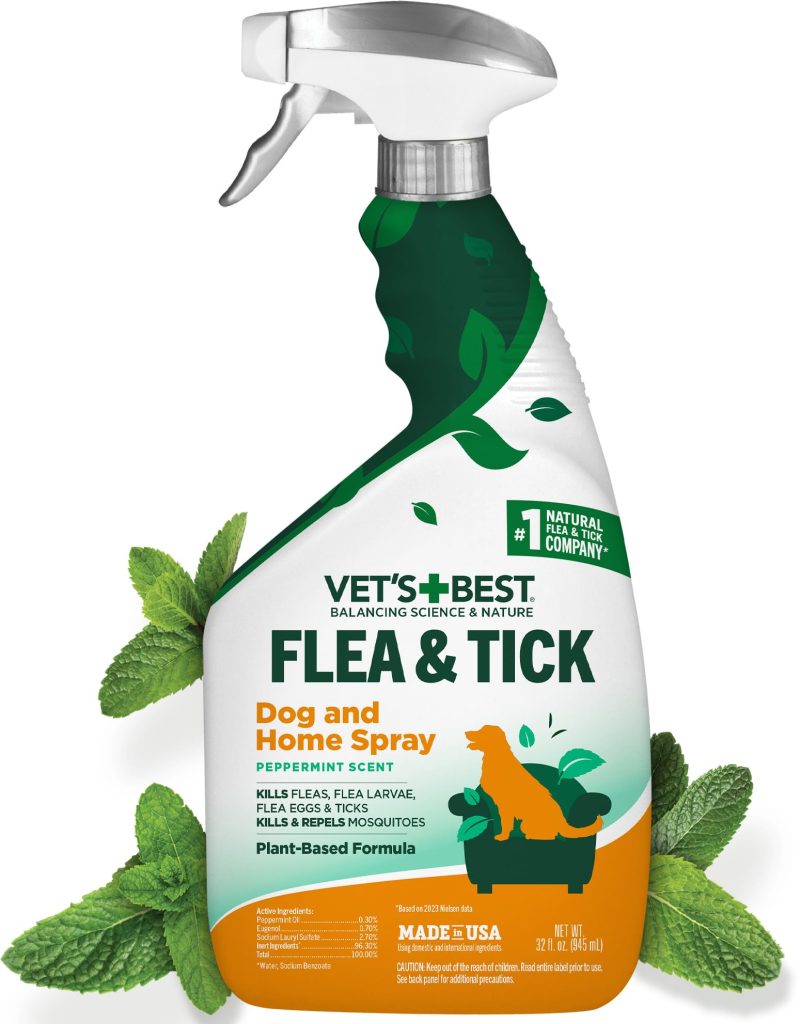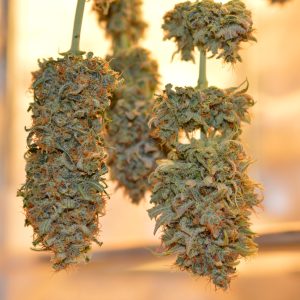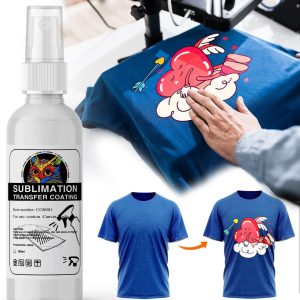
Protecting your beloved pets from fleas and ticks requires the right flea and tick spray solution tailored to your specific needs. With numerous products flooding the market, choosing between natural and chemical formulations can feel overwhelming. This comprehensive analysis examines the most effective spray options available, helping you make informed decisions about your pet’s health and safety.
Understanding How Flea and Tick Sprays Work
Flea and tick spray products operate through different mechanisms depending on their active ingredients. Chemical-based sprays typically contain synthetic compounds that either kill parasites on contact or disrupt their nervous systems, providing immediate results. These formulations often include ingredients like imidacloprid, permethrin, or pyriproxyfen, which have proven track records for eliminating existing infestations.
Natural spray alternatives rely on essential oils and botanical extracts that repel rather than kill parasites. Common natural ingredients include peppermint oil, citronella oil, cedarwood oil, and clove extract. While these ingredients may not provide the instant knockdown effect of chemical compounds, they offer a gentler approach for pet owners concerned about exposure to synthetic pesticides.
The effectiveness timeline varies significantly between product types. Chemical sprays like those containing imidacloprid start working within 24 hours to kill fleas, while natural options may require consistent application over several days to establish protective barriers. Understanding these differences helps set realistic expectations for treatment outcomes.
Key Active Ingredients Comparison:
| Chemical Ingredients | Natural Ingredients | Primary Action |
|---|---|---|
| Imidacloprid | Peppermint Oil | Kill vs Repel |
| Permethrin | Citronella Oil | Fast vs Gradual |
| Pyriproxyfen | Cedarwood Oil | Systemic vs Topical |
| Flumethrin | Clove Extract | Long-lasting vs Frequent Application |
Natural Flea and Tick Spray Benefits and Limitations
Natural flea and tick spray formulations have gained popularity among pet owners seeking chemical-free alternatives. These products combine potent blends of peppermint oil, citronella oil, cedarwood oil and clove extract to help repel fleas and ticks without harsh pesticides. The appeal lies in their perceived safety profile and environmental friendliness.
The primary advantage of natural sprays centers on their gentle nature. Pet owners with sensitive animals or those concerned about chemical exposure find comfort in botanical ingredients. Many natural products can be applied more frequently than chemical alternatives without the same toxicity concerns. Additionally, these products often emit pleasant scents that humans enjoy, unlike the sometimes harsh odors of chemical treatments.
However, natural sprays come with notable limitations. If your pet already has fleas, purchasing only a flea repellent product is not going to solve your problem, as existing infestations must be treated with products that kill fleas, not ones that simply repel them. This distinction proves crucial for pet owners dealing with active infestations versus prevention scenarios.
Natural spray formulations typically require more frequent applications, sometimes daily during peak flea and tick seasons. The protection window remains shorter compared to chemical alternatives, making them less convenient for busy pet owners. Additionally, effectiveness can vary based on individual pet chemistry and the severity of local parasite populations.
Natural Spray Application Schedule:
- Prevention Phase: Every 2-3 days during low-risk periods
- Active Season: Daily applications during peak flea/tick months
- Post-Treatment: Continue for 2 weeks after last parasite sighting
- Maintenance: Weekly applications year-round in high-risk areas
Chemical Flea and Tick Spray Effectiveness
Chemical-based flea and tick spray products deliver unmatched effectiveness for eliminating existing infestations and providing long-term protection. Chemical-based sprays are often more potent and can provide quick results, offering long-lasting protection with residual effects that continue to kill fleas and ticks for weeks after application. This immediate action proves invaluable when dealing with established parasite populations.
Modern chemical formulations have evolved beyond simple contact killers. Advanced products now incorporate growth regulators that prevent immature fleas from developing into reproducing adults. This dual-action approach addresses both immediate infestations and prevents future generations from establishing. Products containing pyriproxyfen or s-methoprene specifically target the flea life cycle, breaking the reproduction chain effectively.
Professional-grade chemical sprays often provide residual protection lasting 30-90 days, significantly reducing application frequency compared to natural alternatives. This extended protection proves particularly valuable for outdoor cats or dogs that frequently venture into wooded areas where tick populations thrive. The convenience factor cannot be understated for pet owners managing multiple animals or those with demanding schedules.
Safety considerations require careful attention when using chemical sprays. NRDC recommends s-methoprene or pyriproxyfen as less toxic ingredients, but cautions to read labels carefully because some products combine them with other, more harmful pesticides. Understanding ingredient lists helps pet owners select products that balance effectiveness with safety concerns.
Chemical Spray Effectiveness Timeline:
- Hour 1-2: Initial contact kill begins
- Hours 2-12: Peak knockdown period for active parasites
- Days 1-7: Continued elimination of emerging parasites
- Weeks 2-12: Residual protection prevents new infestations
Application Techniques for Maximum Effectiveness
Proper application technique significantly impacts flea and tick spray effectiveness regardless of product type. Many pet owners unknowingly reduce treatment success through incorrect application methods or inadequate coverage areas. Understanding proper technique ensures maximum protection while minimizing waste and potential side effects.
Pre-application preparation sets the foundation for successful treatment. Remove pet collars, tags, and accessories that might prevent spray contact with skin. Brush through the coat to remove tangles and debris that could block spray penetration. For heavily matted animals, consider professional grooming before treatment to ensure adequate skin contact.
Application should follow a systematic approach covering all potential hiding spots where parasites congregate. Start at the head and work backward, paying special attention to areas where pets cannot easily groom themselves. The neck, shoulders, base of tail, and areas between toes require thorough coverage as these locations provide ideal environments for flea and tick attachment.
Step-by-Step Application Process:
- Shake container thoroughly – Ensures even ingredient distribution
- Hold 6-8 inches from pet – Prevents oversaturation and waste
- Spray against hair growth – Improves skin contact and coverage
- Work into coat with hands – Distributes product evenly
- Avoid eyes, nose, and mouth – Prevents irritation and ingestion
- Allow complete drying – Ensures proper absorption and effectiveness
Environmental treatment complements direct pet application for comprehensive protection. Flea and tick home sprays harness the power of nature, providing a safe and effective way to protect living spaces and pets. Treating pet bedding, carpeted areas, and outdoor spaces where pets spend time creates protective barriers that prevent reinfestations.
Targeting Different Life Stages
Effective flea and tick spray treatment requires understanding parasite life cycles and targeting multiple developmental stages simultaneously. Adult fleas represent only about 5% of the total population, with eggs, larvae, and pupae comprising the remaining 95%. Comprehensive treatment strategies address all life stages to prevent population rebounds after initial treatment success.
Flea eggs prove particularly challenging as they resist many adult-targeted treatments. These microscopic eggs fall from infested animals and develop in carpets, bedding, and outdoor areas for 2-14 days before hatching. Spray products containing insect growth regulators specifically target this vulnerable stage, preventing development into biting adults. Regular vacuuming combined with spray treatment removes eggs and exposes developing larvae to treatment compounds.
Larval stage fleas feed on organic debris and adult flea feces in carpeted areas and pet bedding. They avoid light and burrow deep into carpet fibers where spray penetration becomes challenging. High-volume spray applications or foam formulations improve penetration into these protected areas. Treatment frequency during heavy infestation periods may require weekly applications for 4-6 weeks to address emerging generations.
Pupal stage fleas remain protected within cocoons that resist most spray treatments. This stage can persist for weeks to months depending on environmental conditions. Mechanical disruption through vacuuming combined with consistent spray schedules helps break through pupal protection and exposes emerging adults to treatment compounds.
Flea Life Cycle Treatment Schedule:
- Week 1: Initial heavy treatment targeting adults and larvae
- Week 2-3: Follow-up treatments for emerging pupae
- Week 4-6: Maintenance treatments preventing reestablishment
- Month 2-3: Monthly monitoring and spot treatments as needed
Safety Considerations for Pets and Families
Flea and tick spray safety extends beyond immediate pet health to encompass family members, especially children who frequently interact with treated animals. Understanding potential risks and implementing appropriate precautions ensures effective parasite control without compromising household safety. Different product formulations present varying risk profiles that require specific handling protocols.
Chemical spray formulations require the most stringent safety measures. Never apply chemical treatments to pregnant or nursing animals without veterinary consultation. Young puppies and kittens under 12 weeks typically cannot safely process many chemical ingredients, necessitating natural alternatives or professional veterinary treatment. Senior pets with compromised liver or kidney function may struggle to metabolize chemical compounds effectively.
Post-application restrictions help minimize exposure risks for family members. Keep treated pets separated from young children for 2-4 hours after chemical spray application, allowing products to dry completely and absorb into the coat. Wash hands thoroughly after applying any spray product, and store containers in secure locations away from children and food preparation areas.
Environmental considerations extend to non-target species that might contact treated areas. Chemical sprays can harm beneficial insects, aquatic life, and other wildlife if applied inappropriately. Avoid treating outdoor areas before rainfall that could carry chemicals into waterways. Indoor applications should focus on pet-specific areas rather than broad-spectrum room treatments.
Safety Protocol Checklist:
- ✅ Read entire label before first use
- ✅ Test small area for sensitivity reactions
- ✅ Ventilate treatment areas during application
- ✅ Separate pets from children during drying period
- ✅ Store products securely away from heat and children
- ✅ Monitor pets closely for 24 hours post-treatment
Seasonal Application Strategies
Flea and tick spray effectiveness varies significantly with seasonal conditions, requiring adaptive strategies that account for temperature, humidity, and parasite activity patterns. Understanding these cycles helps optimize treatment timing and frequency for maximum protection throughout the year. Regional variations also influence when aggressive treatment protocols become necessary.
Spring emergence marks the beginning of active flea and tick seasons in most climates. As temperatures consistently reach 50°F (10°C), dormant flea pupae begin emerging while ticks become active after winter hibernation. Early spring applications create protective barriers before parasite populations explode. This proactive approach proves more effective and economical than reactive treatments after infestations establish.
Summer heat intensifies parasite activity and reproduction rates. Flea development accelerates dramatically in warm, humid conditions, with life cycles completing in as little as 14 days compared to several months in cooler weather. Weekly flea and tick spray applications may become necessary during peak summer months, especially for outdoor pets or those in heavily infested areas.
Fall treatment strategies focus on preventing overwintering populations from establishing in homes. As outdoor temperatures drop, fleas and ticks seek warm indoor environments where they can continue reproducing throughout winter months. Intensive fall treatments combined with environmental management prevent these seasonal migrants from establishing permanent indoor populations.
Regional Seasonal Schedule:
- Northern Climates: April-October active treatment, November-March maintenance
- Southern Climates: March-November active treatment, December-February reduced frequency
- Year-Round Warm Areas: Consistent monthly applications with peak season intensification
- High Altitude Regions: June-September primary season, May and October transitional treatments
Cost-Effectiveness Analysis
Evaluating flea and tick spray options requires balancing upfront costs against long-term effectiveness and convenience factors. Price comparisons based solely on initial purchase costs often mislead consumers, as application frequency, coverage area, and treatment duration significantly impact total ownership expenses. Understanding these variables helps identify the most economical solutions for specific situations.
Natural spray products typically carry lower per-bottle costs but require more frequent applications, potentially increasing monthly treatment expenses. A $15 natural spray lasting 2 weeks costs approximately $30 monthly, while a $25 chemical spray providing 4-week protection costs $25 monthly. However, these calculations assume similar effectiveness levels, which may not reflect real-world performance differences.
Professional treatment costs provide baseline comparisons for DIY spray applications. Professional monthly treatments typically range from $40-80 per pet, making effective DIY spray programs attractive alternatives. However, professional treatments often include comprehensive property treatment and guaranteed effectiveness that DIY options cannot match.
Hidden costs associated with ineffective treatments can dramatically impact overall expenses. Failed treatment attempts leading to home infestations may require professional intervention costing hundreds of dollars. Veterinary bills for flea-related skin conditions or tick-borne illnesses add substantial expenses that effective prevention programs eliminate.
Annual Cost Comparison (Single Pet):
| Treatment Type | Initial Cost | Monthly Cost | Annual Total | Effectiveness Rating |
|---|---|---|---|---|
| Natural Spray | $15-25 | $30-40 | $360-480 | Moderate |
| Chemical Spray | $20-35 | $20-35 | $240-420 | High |
| Professional Service | $40-80 | $40-80 | $480-960 | Very High |
| Combination Approach | $35-60 | $35-50 | $420-600 | Very High |
Multi-Pet Household Considerations
Managing flea and tick spray treatments in multi-pet households presents unique challenges requiring coordinated strategies and modified protocols. Cross-contamination between treated and untreated animals can reduce overall program effectiveness, while varying pet sensitivities complicate product selection. Developing systematic approaches ensures comprehensive protection for all household pets.
Treatment timing coordination prevents parasites from jumping between pets during vulnerable periods. Treat all pets simultaneously rather than staggered applications that leave windows for parasite migration. This synchronized approach creates uniform protection levels across the entire pet population, preventing undertreated animals from serving as parasite reservoirs.
Product compatibility becomes crucial when treating different species or age groups within the same household. Some chemical ingredients safe for dogs prove toxic to cats, requiring species-specific product selection. Young animals may need gentler formulations while senior pets might require modified application techniques or frequencies.
Cross-contamination prevention requires temporary separation during treatment and drying periods. Create designated areas for each pet during post-application periods, preventing grooming between animals that could lead to ingestion of treatment products. This separation proves especially important when using different product types on different pets.
Multi-Pet Treatment Protocol:
- Assess individual needs – Age, species, health status, sensitivity
- Select compatible products – Ensure safety for all species present
- Coordinate treatment timing – Simultaneous application for all pets
- Provide separation areas – Prevent cross-contamination during drying
- Monitor all animals – Watch for reactions across entire pet population
- Maintain consistent schedules – Regular treatments for sustained protection
Environmental Impact and Eco-Friendly Options
Flea and tick spray environmental impact extends beyond immediate household effects to encompass broader ecological considerations. Chemical formulations can persist in soil and water systems, potentially affecting non-target species and beneficial insects. Understanding these impacts helps environmentally conscious pet owners make informed decisions about treatment options.
Bioaccumulation concerns arise with persistent chemical compounds that build up in food chains over time. Permethrin and other synthetic pyrethroids, while effective against parasites, can harm beneficial pollinators and aquatic organisms when they enter environmental systems. Proper disposal of empty containers and avoiding over-application helps minimize these ecological risks.
Natural flea and tick spray alternatives offer reduced environmental impact but may still affect non-target species. Essential oils concentrated enough to repel parasites can also impact beneficial insects, though effects typically prove less persistent than synthetic compounds. Rotating between different natural ingredients may help reduce selective pressure on local insect populations.
Integrated pest management approaches combine multiple strategies to reduce overall chemical usage while maintaining effectiveness. These programs incorporate environmental modifications, biological controls, and targeted chemical applications only when necessary. This balanced approach often proves more sustainable long-term than relying solely on spray treatments.
Eco-Friendly Best Practices:
- Choose biodegradable formulations when possible
- Follow label directions precisely to avoid over-application
- Dispose of containers properly through hazardous waste programs
- Avoid application before rainfall that could carry chemicals into waterways
- Consider beneficial insect impact when treating outdoor areas
- Rotate product types to reduce resistance development
Ready to protect your pets with the most effective flea and tick spray solution? Browse our curated selection of tested and veterinarian-recommended products to find the perfect protection for your furry family members. Don’t let parasites compromise your pet’s health and comfort – take action today with proven flea and tick spray formulations designed for maximum effectiveness and safety.
Sources:





